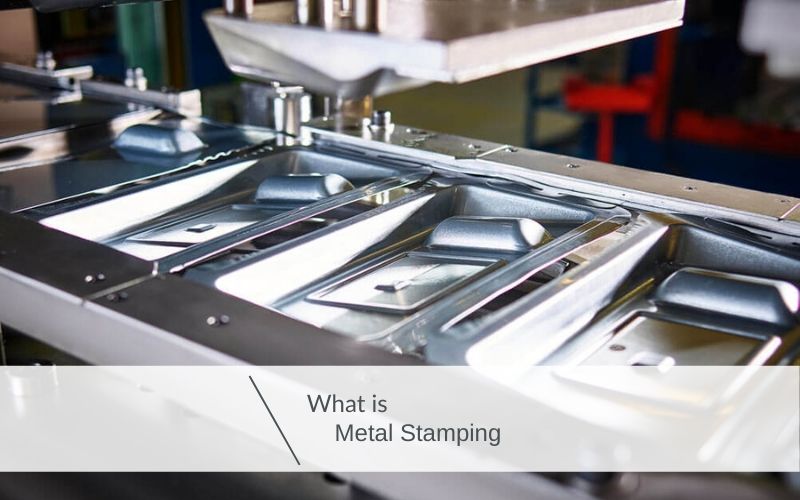Steel Stamping Innovations: Elevating Manufacturing Processes for Superior Results
In the realm of making processes, steel marking has long been a foundation strategy for creating an array of precision components. With the ruthless march of technological innovation, the landscape of metal marking is undertaking a considerable transformation.
Evolution of Steel Marking Strategies

Furthermore, developments in material scientific research have led to the growth of high-strength alloys that can currently be effortlessly marked right into complex forms, satisfying a broader variety of industrial applications. The assimilation of robotics and artificial intelligence has better maximized the marking procedure by enhancing speed and accuracy while reducing the threat of human error.

Effect of Advanced Materials
Have advanced materials changed steel stamping processes considerably in the manufacturing sector? By making use of products such as high-strength alloys, progressed composites, and cutting-edge coatings, steel marking procedures can now generate parts that are lighter, more powerful, and more resilient than ever before.
These innovative materials supply superior mechanical homes, rust resistance, and thermal stability, allowing manufacturers to fulfill the demands of modern sectors such as aerospace, automobile, and electronics. Additionally, the usage of sophisticated materials in steel stamping has actually facilitated the production of complicated geometries and elaborate layouts that were previously unattainable via typical approaches.
In addition, the implementation of sophisticated products has brought about minimized material waste, lower production expenses, and shorter preparations, making metal marking procedures a lot more cost-effective and sustainable. As technology proceeds to advancement, the effect of innovative products on steel stamping processes is anticipated to drive more technology and improve the competitiveness of suppliers in the global market.
Automation in Metal Stamping
The evolution of steel stamping procedures driven by the assimilation of advanced products has actually established the stage for considerable innovations in automation within the production market. Automation in metal marking has transformed manufacturing processes, improving performance, precision, and total result top quality. Via the usage of robotics, sensors, and computer-controlled systems, tasks that were as soon as hands-on and taxing can currently be executed with unmatched speed and precision.
Automation in steel stamping not only increases manufacturing rates yet also makes sure uniformity in the manufacturing process. By decreasing human treatment, the risk of mistakes is significantly reduced, causing greater levels of product uniformity and dependability. Additionally, automation allows makers to undertake intricate marking jobs that would certainly be impractical or challenging to accomplish by hand.
Additionally, automation in steel stamping contributes to a much safer working environment by lowering the demand for employees to participate in recurring or hazardous tasks - Metal Stamping. This change in the direction of automation not just enhances performance but also leads the way for the future of manufacturing, where modern technology plays a central duty in driving operational quality
Quality Assurance and Inspection Solutions
With an emphasis on accuracy and reliability, quality control and examination systems play a vital role in ensuring go to the website product quality in steel stamping procedures. These systems are created to check every stage of manufacturing, from material evaluation to the last item, to guarantee that all elements fulfill the needed criteria. By applying innovative modern technologies such as optical inspection systems, coordinate determining equipments (CMM), and automated gauging tools, producers can spot also the smallest deviations in dimensions, surface top quality, and general integrity of stamped components.

Sustainability Practices in Metal Stamping
Building read this post here upon the foundation of precision and integrity developed with high quality control and evaluation systems, the combination of sustainable methods in metal stamping procedures is progressively becoming a focal factor for suppliers seeking to reduce environmental influence and enhance resource usage. Sustainability methods in steel stamping encompass a series of efforts targeted at decreasing waste generation, energy intake, and greenhouse gas emissions throughout the production procedure.
One secret aspect of sustainability in steel stamping is the fostering of green products and innovations that promote recyclability and waste decrease. By utilizing recycled materials and applying energy-efficient machinery, manufacturers can reduce their carbon footprint and contribute to a more sustainable production cycle. Additionally, maximizing production procedures to minimize product waste and energy usage not just benefits the environment however also brings about set you back financial savings for companies over time.
In addition, the execution of lasting techniques in metal marking can enhance brand reputation and interest eco mindful customers. As sustainability proceeds to gain importance in the manufacturing market, incorporating green initiatives right into steel marking procedures is essential for long-lasting success and competition on the market.
Verdict
To conclude, steel stamping methods have substantially advanced with time, incorporating advanced products and automation to boost producing processes. Quality assurance and assessment systems play a crucial role in making sure premium outcomes, blog while sustainability methods are increasingly being applied to lower environmental impact. These developments in steel marking have actually changed the industry, leading to more efficient and lasting production techniques for numerous markets.
Metal marking, when a handbook and labor-intensive procedure, has changed into a highly automated and sophisticated approach of forming metal sheets right into various types and layouts.Have advanced materials transformed steel stamping processes dramatically in the production market? By making use of materials such as high-strength alloys, progressed composites, and innovative coverings, metal stamping procedures can currently generate components that are lighter, stronger, and more sturdy than ever previously.
The evolution of steel marking procedures driven by the integration of advanced materials has actually established the phase for substantial developments in automation within the manufacturing industry.In conclusion, metal marking strategies have actually dramatically developed over time, integrating advanced products and automation to enhance manufacturing procedures.